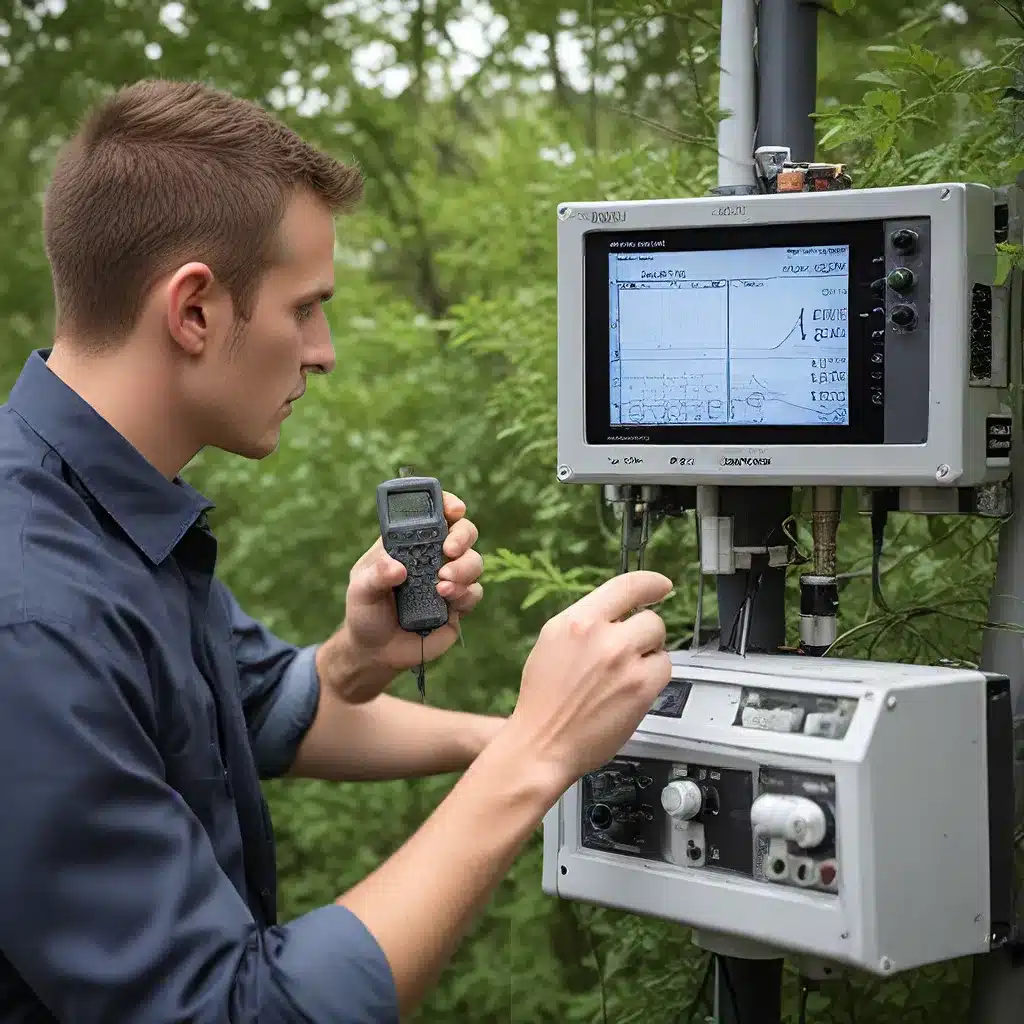
Ensuring Precision in Sensor Measurements
Calibration is the vital process of adjusting and standardizing measurement instruments to ensure their accuracy and reliability. In the realm of environmental monitoring, calibration is indispensable, as it guarantees that the data collected truly reflects the conditions being measured. Without proper calibration, measurements can be skewed, leading to misleading interpretations and ultimately misguided actions.
The calibration process involves several key steps to guarantee the accuracy of measurement instruments. It starts with the use of reference standards – devices that are precisely and accurately measured, traceable to international standards. These standards provide a known value against which the instrument under calibration is compared. The instrument being calibrated is then compared to the reference standard, and any discrepancies between the instrument’s readings and the known values are identified. Adjustments are then made to the instrument to align its measurements with the reference standards. After adjustments, the instrument is tested again to ensure that its measurements now align with the reference standards’ values.
Proper documentation of the calibration process is crucial, as it serves as an audit trail for quality control and accountability. Environmental monitoring systems should be calibrated regularly to account for wear and tear, environmental conditions, and any other factors that might affect their accuracy over time.
The Significance of Calibration in Environmental Monitoring
Accurate data is the foundation of meaningful insights and informed decision-making. Calibrated instruments contribute to quality assurance by reducing the risk of erroneous measurements, which is particularly crucial in fields where minor deviations can have significant consequences, such as in air quality monitoring.
Furthermore, many environmental monitoring processes are subject to regulatory standards, and calibrated instruments help organizations meet these standards and demonstrate their commitment to accurate reporting. Reliable data is also essential for scientific research, and calibrated instruments enhance the credibility of research findings, contributing to the overall advancement of environmental sciences.
Calibration Practices for Sensor Networks and IoT
In the context of sensor networks and the Internet of Things (IoT), calibration plays a crucial role in ensuring the accuracy and reliability of sensor data. IoT systems often rely on a large number of distributed sensors to gather environmental information, and the integrity of this data is paramount for effective monitoring and control.
Setra’s FLEX is an example of a comprehensive monitoring and control solution that emphasizes the importance of calibration. The FLEX system uses a high-accuracy differential pressure transducer and provides a flexible, easy-to-use platform for monitoring various environmental parameters, such as temperature, humidity, air velocity, and particle count, in addition to pressure. The modular design of the FLEX allows for easy calibration and maintenance, ensuring the continued accuracy of the sensor data.
Vaisala’s expertise in humidity and dew point sensors also highlights the importance of calibration in the context of rechargeable battery manufacturing. In this industry, accurate and stable dew point measurements are critical for ensuring product quality, safety, and energy efficiency. Vaisala emphasizes the need for regular calibration to maintain the reliability of these sensors, as they can be susceptible to drift and environmental factors over time.
Optimizing Sensor Calibration for Environmental Monitoring
To optimize the calibration process for environmental monitoring and control, several best practices can be employed:
-
Traceability to International Standards: Ensure that the reference standards used for calibration are directly traceable to international measurement standards, such as those maintained by the National Institute of Standards and Technology (NIST).
-
Experienced Professionals: Utilize the services of experienced technicians who understand the intricacies of different environmental monitoring instruments and their calibration requirements.
-
Regular Maintenance: Implement regular calibration and maintenance schedules to account for variations over time and minimize the risk of inaccurate measurements due to instrument drift.
-
Comprehensive Documentation: Meticulously document every step of the calibration process, from initial measurements to adjustments and final calibrated values, to maintain a transparent record of the commitment to quality.
-
Automation and Remote Capabilities: Explore solutions like the Setra FLEX that offer automated calibration features and the ability to perform remote calibration and configuration, reducing the time and resources required for maintenance.
-
Calibration Care Agreements: Consider Calibration Care Agreements, as offered by Vaisala, which provide planned calibrations for multiple years, ensuring the long-term accuracy of measurement instruments.
By adhering to these best practices, organizations can ensure that their environmental monitoring systems deliver the accurate and reliable data necessary for informed decision-making, regulatory compliance, and scientific credibility.
Conclusion: The Pivotal Role of Calibration in Sensor Networks and IoT
Calibration is the linchpin of accurate environmental monitoring and control. Without it, the data collected loses its reliability and utility, undermining the effectiveness of sensor networks and IoT systems. As the world becomes increasingly reliant on sensor-driven data to guide policies, research, and decision-making, the importance of calibration cannot be overstated.
By prioritizing calibration excellence, organizations can ensure that the data they generate is of the highest quality, contributing to quicker, more reliable, and more actionable insights. This commitment to accuracy and reliability is not only essential for environmental monitoring, but also critical for the broader adoption and success of sensor networks and IoT technologies across various industries.
To learn more about sensor network design, IoT applications, and related technologies, be sure to visit sensor-networks.org, a comprehensive resource for professionals, researchers, and enthusiasts in the field.